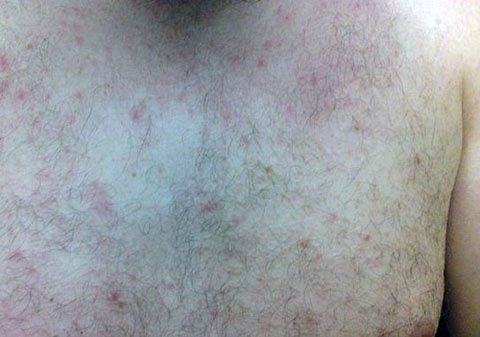What Causes Heat Rash?

Heat rash usually occurs when blocked sweat ducts trap excessive sweating under the skin. Symptoms include superficial blisters (barks), small red bumps, and deep warm bumps. Some forms of this skin condition cause itching, burning, or burning.
Heat rash is usually a reaction to extreme heat or cold. It can be caused by exposure to hot or cold weather conditions such as rain, snow, or excessive sweating. Some people are more prone to this form of skin rash and may also experience it at other times in their lives. The most common forms of this condition include atopic eczema, acne vulgaris, rosacea, and dermatitis herpetiformis. However, heat rash can also occur due to many other factors, such as severe stress or emotional distress.
The severity of this type of skin rash can range from mild to severe. In some cases, it can be treated with over-the-counter or prescription topical medications. In some cases, the underlying cause (s) may require medical attention. If you have atopic eczema or other skin conditions, consult a dermatologist or doctor.
Although this condition is untreated, it responds well to some lifestyle changes
Below are tips to help reduce the appearance of heat rashes:
- It is important to drink enough water every day. Drinking plenty of water will not only help remove toxins and impurities from your body, but it will also help keep your body hydrated and fresh. You should also avoid using scented soaps and cleansers.
- Avoid wearing tight clothing, especially if you are suffering from psoriasis. Sweat can clog your pores and trap moisture under your skin, making you more susceptible to heat rash. Wear loose-fitting cotton clothing instead.
- Avoid strenuous exercise. Excessive exertion can also irritate your rash. Instead of participating in strenuous physical activities, try to do some light exercises such as walking, swimming, or gardening.
- Heat rash can be caused by an allergic reaction to something like salt, chlorine, perfumed soaps, or detergents. If you notice any of these symptoms, you should contact your doctor immediately.
You should avoid using any products that contain artificial fragrances or dyes
These ingredients are known to trigger an allergic reaction in some people.
Use a hot tub at least once a month. The steam from a hot tub can help to eliminate excess sweat, which helps to open up your pores.
Avoid getting too much sunlight. It is especially important to stay out of the sun during the winter. Sunlight has been proven to aggravate the development of an atopic eczema rash. It is also good to avoid direct exposure to sunlight during summer.
Avoid taking hot showers. Hot water, especially at the end of the shower or when the air conditioning is on, can increase the risk of heat rash. It is also best to take a cool shower rather than an extremely hot shower. In hot climates, it is important to wear loose-fitting clothing, which will allow your skin to breathe.
Excessive sun can cause drying and cracking of the skin, which can lead to dryness. Wear hats or a hat that covers your entire head to prevent the sun from hitting your skin directly.
To prevent the onset of a rash, keep the air in your home moist, but not overly dry. If you live in an area that experiences very warm weather, you may want to invest in an air conditioner to keep the humidity low.
Natural products are often recommended for treating this condition. Aloe Vera, lavender oil, and witch hazel are some examples. Natural products are also often used to treat skin rashes caused by heat.
For more information on treating your heat rash cure, contact your family physician. You may have to try several different approaches before you find the one that works best for you.

